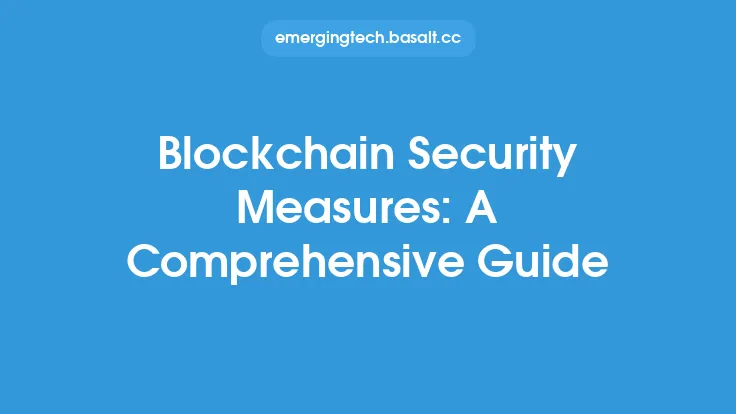As the blockchain ecosystem continues to grow and evolve, it has become an attractive target for cybercriminals seeking to exploit its users. One of the most significant threats to blockchain security is phishing attacks, which can result in the loss of sensitive information, financial assets, and even entire digital identities. In this article, we will delve into the world of blockchain phishing attacks, exploring what they are, how they work, and most importantly, how to protect against them.
Understanding Blockchain Phishing Attacks
Blockchain phishing attacks are a type of social engineering attack where attackers attempt to trick victims into revealing sensitive information, such as private keys, passwords, or other personal data. These attacks can take many forms, including emails, messages, websites, and even social media posts. The goal of the attacker is to create a sense of urgency or panic, prompting the victim to act impulsively and divulge sensitive information. Blockchain phishing attacks can be highly sophisticated, using advanced tactics such as spoofing, malware, and other types of cyber threats.
Types of Blockchain Phishing Attacks
There are several types of blockchain phishing attacks that users should be aware of. One of the most common is the "wallet phishing" attack, where attackers create fake websites or emails that appear to be from a legitimate wallet provider. The victim is then prompted to enter their private key or other sensitive information, which is subsequently stolen by the attacker. Another type of attack is the "exchange phishing" attack, where attackers target users of cryptocurrency exchanges, attempting to steal their login credentials or other sensitive information. Additionally, there are "smart contract phishing" attacks, where attackers create fake smart contracts that appear to be legitimate, but are actually designed to steal funds or sensitive information.
How to Identify Blockchain Phishing Attacks
Identifying blockchain phishing attacks requires a combination of technical knowledge and vigilance. One of the most important things to look out for is suspicious emails or messages that appear to be from a legitimate source, but contain spelling or grammar mistakes. Additionally, users should be wary of websites or links that appear to be legitimate, but have slight variations in the URL or domain name. It's also important to be cautious of unsolicited requests for sensitive information, such as private keys or passwords. Furthermore, users should always verify the authenticity of a website or email by checking for HTTPS encryption and looking for trust badges or other indicators of legitimacy.
Best Practices for Protecting Against Blockchain Phishing Attacks
Protecting against blockchain phishing attacks requires a multi-layered approach that includes both technical and behavioral measures. One of the most important things users can do is to use strong, unique passwords and enable two-factor authentication (2FA) whenever possible. Additionally, users should always verify the authenticity of a website or email before entering sensitive information, and should never click on suspicious links or download attachments from unknown sources. It's also important to keep software and operating systems up to date, as well as to use reputable antivirus and anti-malware software. Furthermore, users should consider using a hardware wallet or other secure storage solution to protect their private keys and other sensitive information.
The Role of Education and Awareness in Preventing Blockchain Phishing Attacks
Education and awareness play a critical role in preventing blockchain phishing attacks. Users who are knowledgeable about the risks and tactics used by attackers are better equipped to identify and avoid phishing attempts. Additionally, education and awareness can help to promote a culture of security and vigilance within the blockchain community, reducing the overall risk of phishing attacks. It's essential for users to stay informed about the latest phishing tactics and threats, as well as to share their knowledge and experiences with others. By working together, the blockchain community can create a safer and more secure environment for all users.
The Future of Blockchain Phishing Attacks
As the blockchain ecosystem continues to evolve, it's likely that phishing attacks will become even more sophisticated and widespread. However, by staying informed, vigilant, and proactive, users can reduce their risk of falling victim to these attacks. The future of blockchain security will depend on the development of new technologies and strategies for preventing and detecting phishing attacks, such as artificial intelligence and machine learning-based solutions. Additionally, the growth of decentralized and community-driven security initiatives will play a critical role in promoting a culture of security and cooperation within the blockchain ecosystem. By working together and staying ahead of the threats, we can create a safer and more secure blockchain ecosystem for all users.





